Kerry Mercer remembers in vivid detail the day last November that police officers in Vanderhoof broke her leg.
Mercer was returning from meeting her teenage son on the street between the home she had previously shared with her ex-husband and the nearby women’s shelter where she’d recently moved, she told The Tyee. Her son was delivering her bedroom slippers to her.
Three days earlier, Mercer, who is Nisga’a from the Nass Valley but has lived in Vanderhoof for over a decade, had been taken into custody following an altercation with her former partner. She says her ex was abusive. But police considered only the man’s story before laying an assault charge against her, she says. Mercer believes the charge is unsubstantiated.
Mercer believes police officers were following her the day she met her son to retrieve her slippers. They surrounded her on the sidewalk about two blocks from her former home, she says.
“They accused me of breaking into my place,” she says.
Officers handcuffed her. She was complying with their orders, she says, when four officers placed her face down on the pavement with her hands behind her back. The officers lifted her off the ground and dropped her, smashing her head into the pavement. They repeated this several times, she says, leaving her with three gashes on her head, a concussion and abrasions on her face.
“Each time they did it I thought I was going to have brain damage, or I didn’t think I was going to survive,” she says.
As two officers pinned her down by her shoulders, another put weight on her leg. The force fractured a bone below her knee. It was when she tried to adjust her leg, which was now bent at an odd angle, that police accused her of resisting, she says. When she couldn’t walk to the police vehicle, Mercer says, officers picked her up by the handcuffs and threw her in, hitting her head on the door.
“When they brought me to the hospital,” she says, “they tried to force me to walk, but I couldn’t, so they picked me up by the handcuffs again.”
“The doctors looked shocked.”
Mercer says the officers threatened to charge her with breaking and entering, but instead charged her with breaching a court order that restricts her from going near the family home. She doesn’t believe the charge, or the previous assault charge, will stand up in court, she says. Mercer’s ex has not been charged, but Mercer believes the RCMP are continuing to investigate.
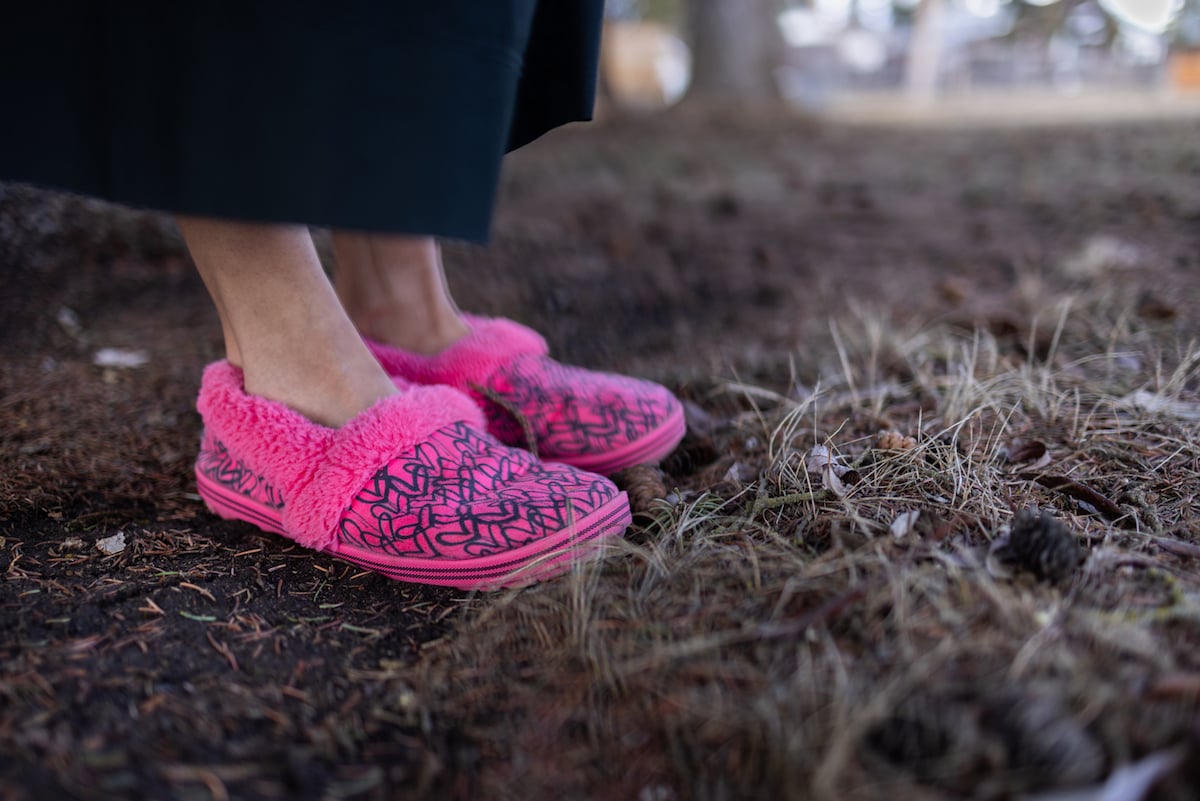
Lynne Stuart, director of Omineca Safe Home Society, a transition home in Vanderhoof for women fleeing violence, says the experience described by Mercer is part of a trend she has been witnessing. There has been an uptick in police using excessive force against women and an increase in police dismissing the complaints women make about their abusive partners, Stuart says.
As a result, she says, women who face potential violence are becoming reluctant to call the police in an emergency.
“This summer, we had six women who access our services regularly say that they would not support RCMP being part of their safety plan,” Stuart says.
It is common, Stuart says, for police to be desensitized to domestic violence and to minimize what has taken place. “There’s a lot of outright disbelief,” she says.
Stuart says basic steps that should be taken to help ensure women’s safety are often not being followed. They include properly assessing incidents involving domestic violence and following standards like B.C.’s Violence Against Women in Relationships policy.
Attempts to raise the issues with police in BC RCMP’s North District have led nowhere, Stuart says. When she approached supervising officers about Mercer’s incident, she was told that Mercer “fell badly,” she says.
“I can’t think of a more dismissive thing to say,” Stuart says. “You can’t keep explaining away what you’re doing.”
The RCMP declined The Tyee’s interview requests and did not respond to a detailed list of questions. In an emailed statement, a spokesperson said that the force takes all reports of violence seriously and “the safety of women is paramount.”
“We cannot speak to specific allegations,” Cpl. Madonna Saunderson wrote. “We continue to work with all victims of violence as we gather evidence to further an investigation. A thorough investigation is done in every reported act. The safety of everyone is a priority of the RCMP.”
Chief Priscilla Mueller, from nearby Saik’uz First Nation, says she also hears from women who don’t want to come forward to police because they don’t feel safe. As a result, she believes that incidents of police violence are dramatically underreported.
“Half of the abuse from RCMP to our Indigenous women are not reported,” she says.
Mueller says she wants tangible action from the B.C. and federal governments and believes better education and more community involvement in policing could improve the relationship between RCMP and Indigenous communities.
“I just feel we need to bring this to a higher level,” Mueller says. “I can’t even imagine living in a safe house and going through all the trauma that led you [there] and then getting your leg broken by the RCMP who are supposed to protect you.”
Policing on Highway of Tears already under scrutiny
Vanderhoof is located about an hour west of Prince George in BC RCMP’s North District, an area that covers nearly three-quarters of the province. Running east to west through the centre of the district is Highway 16, also known as the Highway of Tears for its high number of missing and murdered Indigenous women and girls.
North District is currently under scrutiny from two probes into officer misconduct and allegations of bias against Indigenous people.
A year ago, B.C. announced an independent investigation by the Alberta Serious Incident Response Team after media reports that allegations of sexual misconduct by Prince George RCMP officers against Indigenous girls had not been properly investigated.
While the RCMP recommended charges against at least one officer at the time, Crown prosecutors declined to proceed, citing a lack of evidence.
But two former Mounties say that when potential new evidence that could have reopened the case came to light in 2006, the RCMP covered it up. Their allegations are supported in a 2018 report by the Civilian Review and Complaints Commission for the RCMP, which concluded that “the force dropped the ball.”
A Canadian Human Rights Tribunal is also in the midst of an inquiry into the RCMP’s investigation more than a decade ago into alleged historical abuse of Indigenous students at schools in Burns Lake and Prince George. Six complainants from the Lake Babine Nation say that they were denied access to police services because the RCMP’s “stereotypes and biased attitudes” stood in the way of a thorough investigation.
In September, B.C. applied to join the inquiry, saying it wanted to speak to current efforts at police reform. As the hearings drew to a close in February, the tribunal heard from three witnesses from the province’s Public Safety Ministry.
B.C. provides policing in rural areas of the province through police service agreements with the RCMP. Through the Policing and Security Branch, the province creates its own policing standards under the Police Act. The RCMP, which is under federal jurisdiction, is expected to “harmonize” with those standards, the tribunal heard. That includes conducting internal compliance audits, the ministry says.
However, witnesses also testified that B.C. has no automatic process for reviewing the RCMP’s compliance with provincial standards, nor is there any policy requiring compliance evaluations by B.C.’s director of police services, Glen Lewis.
B.C.’s Public Safety Ministry declined The Tyee’s request to interview Lewis.
Via email, the ministry pointed to standards meant to “improve police responses to marginalized and vulnerable people,” which were established in 2021 and came into effect last July. They include training in trauma-informed practice, investigations of intimate partner violence and Indigenous cultural safety, a spokesperson added.
“The director of police services can also evaluate police agencies’ compliance with the standards,” the ministry wrote. “There are various avenues for the director, including a compliance audit, investigations, inquiries and reviews under the Police Act.”
The province is currently reviewing and consulting on recommendations delivered in 2022 by the special committee on reforming the Police Act, the spokesperson added.
BC policing standards not always followed, advocate says
But Stuart says she’s observed officers not following guidelines, such as B.C.’s Violence Against Women in Relationships policy, which states that police should prioritize calls involving domestic violence, including “all reported breaches of no-contact conditions of criminal orders, recognizances and civil restraining orders.”
Breaches of such conditions “require assessment, no matter how minor,” the policy states.
Stuart describes a lack of motivation by officers in the Vanderhoof area to investigate reported breaches. In one case, Stuart says, a police-based victim services worker she spoke with in a neighbouring community said that a woman reporting a breach was “a liar.”
When Stuart reported the conversation to a supervising officer in the community, he brushed it off, she says.
“It went absolutely nowhere,” she says. “The alarming part for me was... he was their quality assurance member. It was his job to make sure that the... policy was being followed, the protocols around domestic violence are being followed.”
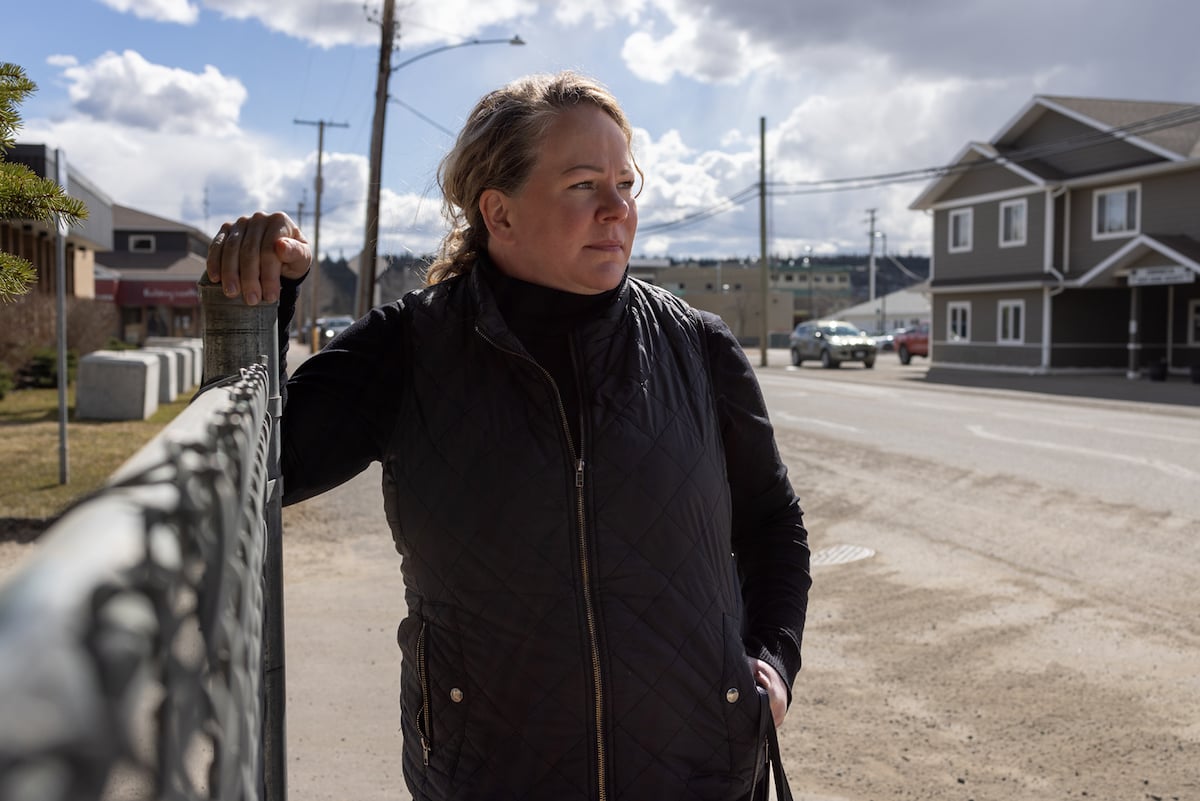
Sometimes, Stuart says, a woman doesn’t report assaults for fear that she will also be charged.
The Violence Against Women in Relationships policy outlines steps to determine the “primary aggressor” in a domestic conflict, including what happened, who is most vulnerable and if anyone should be arrested. But Stuart says that this is sometimes not done, resulting in women being threatened with “dual charges,” meaning both parties would be arrested, when they report abusive behaviour.
The story of M.W.A. exemplifies some of these issues. The Tyee is referring to M.W.A by her initials in order to protect her privacy.
M.W.A. has lived all over B.C. and was in Prince George before meeting her ex-partner and moving to Fraser Lake, west of Vanderhoof, to be with him. She spent several years in the on-again, off-again relationship, which was marked by various types of abuse. M.W.A. and her ex split for good in November 2022.
“That day, he was just in a rage. It had been going on for three days and he told me that he was going to burn me down with the house,” she says. “I believed him.”
She fled the home and her ex-partner turned himself in to police a day later in Williams Lake, about 400 kilometres away, she says. He was charged with assault and uttering threats and released with conditions, including a no-contact order and that he “not possess any knife, axes or any other sharp-bladed instrument,” according to conditions of his release.
When M.W.A. reported that her ex in fact owned several axes and filleting knives, she says, police were more concerned with her ex’s well-being than with her safety.
“They were worried about him staying warm,” she says, despite the fact he didn’t need the axes to keep warm — he also had a mechanical wood splitter and a pellet stove.
Last summer, M.W.A.’s ex took a plea bargain. He was convicted of uttering threats and sentenced to three months’ house arrest. But M.W.A. says that his social media activity indicated that he wasn’t complying with the house arrest, and a photo he took of her without her knowledge and posted online appeared to show he had broken the 50-metre no-contact order.
She reported the apparent breach and says police investigated, but Crown prosecutors declined to act, citing insufficient evidence. She describes “the absolutely overwhelming fear that you feel as a woman not being able to protect yourself.”
“I feel invalidated, unjustified in everything that I say and do, because nobody wants to do anything about it,” she says. “Where’s the justice for all these women, not just for me?”
IIO launches two investigations into Vanderhoof police actions
Last year, two people went missing from the Saik’uz First Nation, about 13 kilometres southwest of Vanderhoof. Jay Raphael, who walked away from his home in the small community of about 400 people in February 2023, has never been found.
On Oct. 11, Chelsey Heron, who also went by the last name Quaw, also went missing. A month later, her remains were discovered in a wooded area near her home, just days after her mother, Pam Heron, pleaded publicly for information about her daughter’s disappearance.
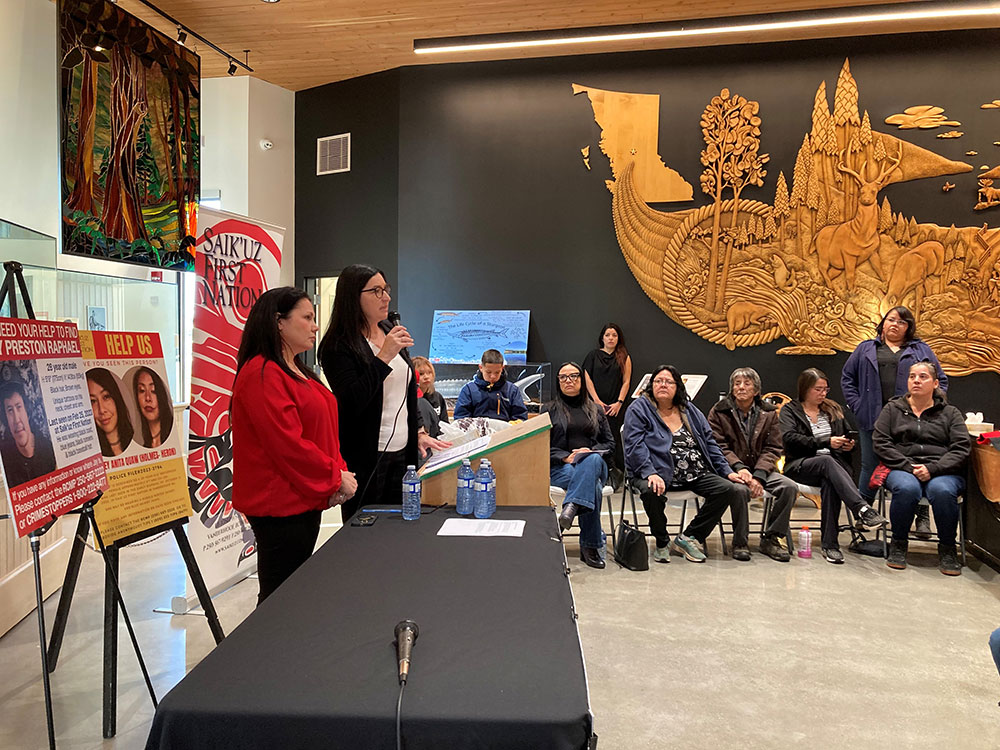
In the months since, questions have been raised about the RCMP’s response to the disappearances and related calls for help.
Advocates who spoke in Vanderhoof shortly before Chelsey Heron’s death was confirmed in November said that they would like to see police doing more in a region known for its high number of missing and murdered Indigenous women and girls. They called for a faster response to reports about missing persons and said that it took a week for police to check Heron’s phone and bank records.
B.C.’s standards for missing persons investigations, developed in response to recommendations made by Commissioner Wally Oppal following the Missing Women Commission of Inquiry, say that investigations should begin “without delay” and that Indigenous women are at increased risk of harm.
“A swift initial response may be critical to the missing person’s well-being and/or the success of the investigation,” Oppal’s report says. “It is easier to scale back the initial response than to recover lost early investigative opportunities.”
But when community members went missing last year, “we felt like we weren’t really taken seriously,” Chief Mueller says.
“There were things that we felt should have been done when Chelsey went missing,” she adds.
In November, the RCMP said it was conducting an investigation, along with the BC Coroners Service, into Heron’s death.
In December, the Independent Investigations Office of BC, which is responsible for investigating police incidents that result in serious harm or death, announced it would also investigate after it was notified of “concerns regarding the police response to a request for a wellness check for a woman on the Saik’uz First Nation.”
“Information provided by the Vanderhoof RCMP confirmed that on Oct. 11, 2023, police were called to conduct a wellness check at a residence,” the IIO said. It added that officers “took steps” following the call but were unable to locate the woman.
Mueller says that Saik’uz First Nation has held meetings with the RCMP, and also with B.C. Attorney General Niki Sharma and Minister of Public Safety Mike Farnworth in November. After Heron’s death was confirmed, she says, she received condolence calls from Sharma and Minister of Indigenous Relations Murray Rankin.
But she adds that Saik’uz council wants to see concrete action from the province to ensure the community’s safety.
“We need to add a voice to the victims and the survivors,” she says. “They need to be able to see that leadership in our communities are going to be standing behind them, that they’re not alone.”
When asked about the nation’s concerns and whether the province had taken steps to address them, B.C.’s Public Safety Ministry pointed to its existing standards for missing persons investigations and the BC Police Missing Persons Centre, a policing unit meant to provide guidance and support for missing persons investigations.
‘Silence isn’t protecting anybody’
Mercer says her injured leg is “getting stronger every day.”
After spending two months at the transition house while her leg was in a full cast and her mobility was limited, she was recently able to move into a bachelor suite. She is now walking without crutches and can begin looking for work.
Mercer’s new apartment is near the police detachment. This means that she regularly sees the officers she says were responsible for breaking her leg. But she says they have never apologized or acknowledged her injuries.
“They’re still rude and they try to avoid me,” she says.
It’s up to the RCMP to report any incidents that result in death or serious harm to the Independent Investigations Office. According to the Police Act, serious harm is defined as “an injury that... may cause substantial loss or impairment of mobility of the body as a whole or of the function of any limb or organ.” But officers didn’t report Mercer’s leg fracture.
IIO chief civilian cirector Ron MacDonald told The Tyee that while a broken leg would generally meet the definition for serious harm and trigger an investigation, the failure to report likely isn’t malicious in nature. Police generally over-report incidents, MacDonald says.
He says a “small percentage” of IIO notifications come from the public. In Mercer’s case, Stuart contacted the office, which has since launched an investigation.
MacDonald adds that progress has also been made in the investigation into the police response to Chelsey Heron’s disappearance, something he considers a priority. But the IIO could not provide a specific timeline for the investigation.
“The historical ramifications of a case like that, considering the issues surrounding missing and murdered women and what that means to their community, are very significant,” MacDonald says. “I certainly want to see that case closed sooner than later.”
Stuart says that having a police detachment near the transition house should provide reassurance. But for many women who say they will no longer report the violence they experience, that’s not the case, she adds.
She hopes that will change. She says that she’ll continue pressing for accountability. The first step is speaking out about her concerns, she adds.
“Our silence isn’t protecting anybody.” ![]()
Read more: Indigenous, Rights + Justice, Gender + Sexuality


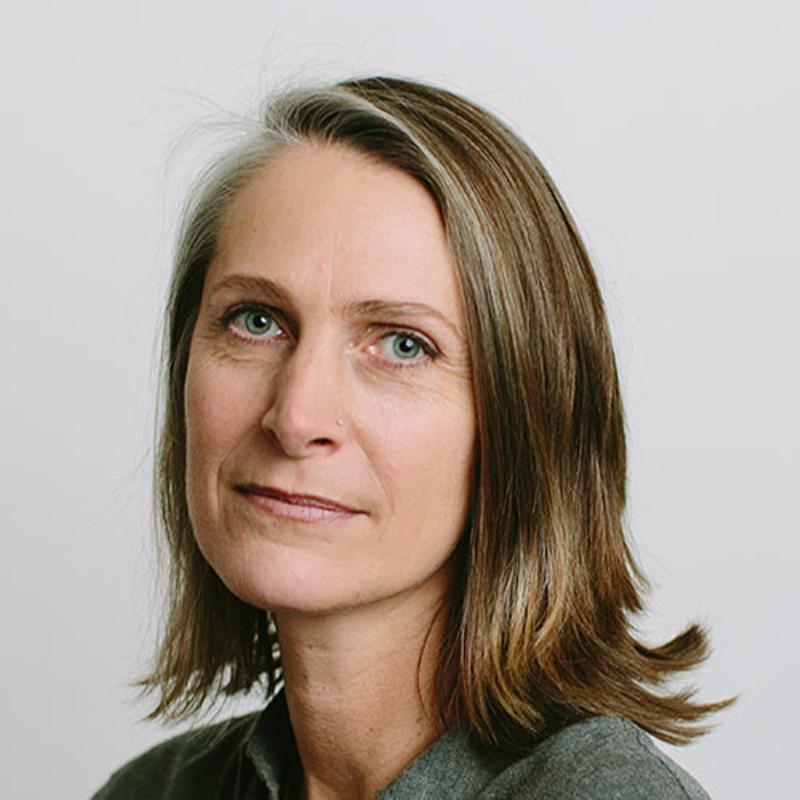

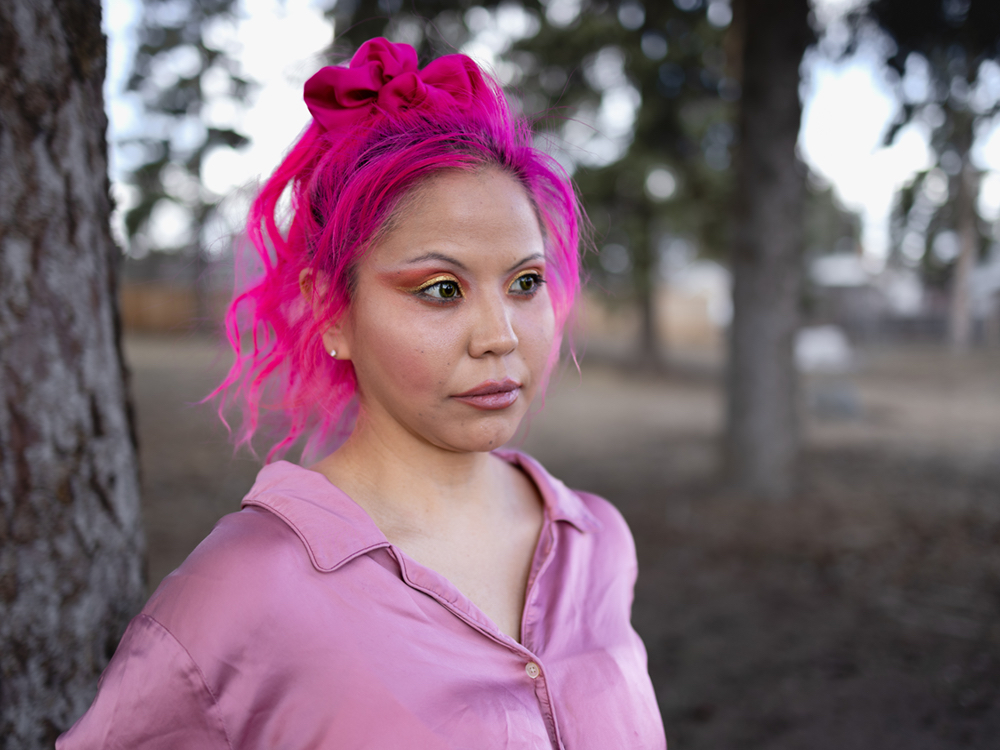
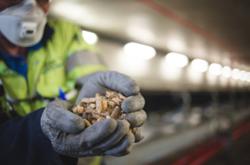











Tyee Commenting Guidelines
Comments that violate guidelines risk being deleted, and violations may result in a temporary or permanent user ban. Maintain the spirit of good conversation to stay in the discussion and be patient with moderators. Comments are reviewed regularly but not in real time.
Do:
Do not: